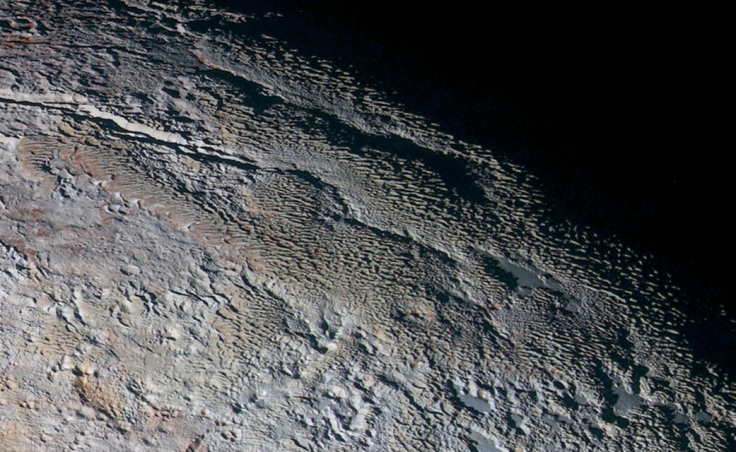Pluto Has Icy Structures Similar To Earth: Methane And Nitrogen Ice Penitentes Discovered On Dwarf Planet

A team of researchers poring over data collected by NASA's New Horizons spacecraft during its July 2015 flyby has found evidence for the existence of features that, until now, had only been seen on Earth. Their research, published Wednesday in the journal Nature, suggests that these icy structures — known as penitentes — may even exist on other planets where the environmental conditions are similar.
On Earth, penitentes are found on high altitude glaciers, such as those in the Andes mountains. Scientists believe these structures, which consist of blade-like spires around the edge of bowl-shaped depressions, are formed due to sublimation of ice and erosion.
In order to see if Pluto had such structures, the researchers used a model similar to the one used by meteorologists on Earth to forecast weather, and a computer simulation of the physics of evaporating ices. Doing so revealed evidence of penitentes in a region of the dwarf planet named Tartarus Dorsa.
"This test of our terrestrial models for penitentes suggests that we may find these features elsewhere in the solar system, and in other solar systems, where the conditions are right," study lead author John Moores from York University, Toronto, said in a statement.
However, unlike those on Earth, the penitentes on Pluto are made from methane and nitrogen ice. They are also much larger and more widely spaced than the terrestrial penitentes.
"This gargantuan size is predicted by the same theory that explains the formation of these features on Earth," Moores said. "In fact, we were able to match the size and separation, the direction of the ridges, as well as their age — three pieces of evidence that support our identification of these ridges as penitentes."
© Copyright IBTimes 2024. All rights reserved.





















